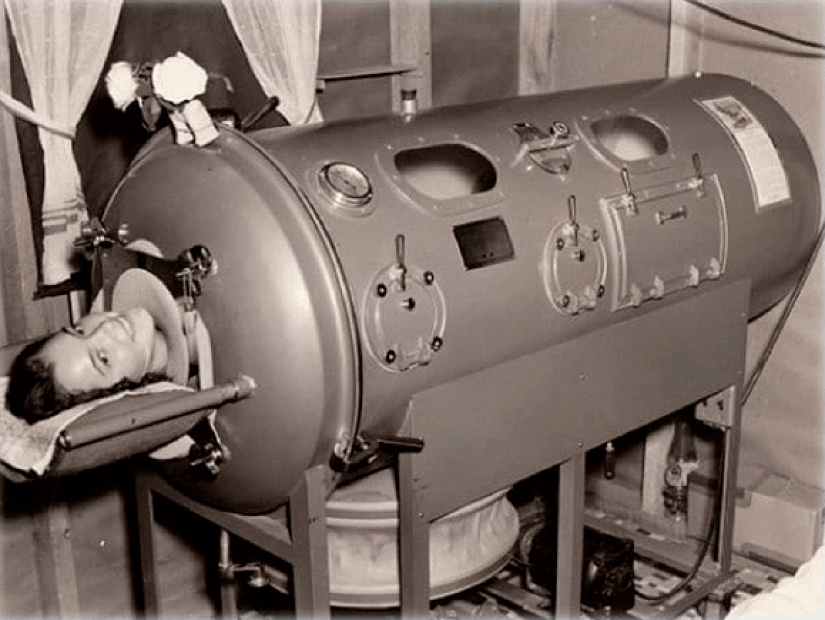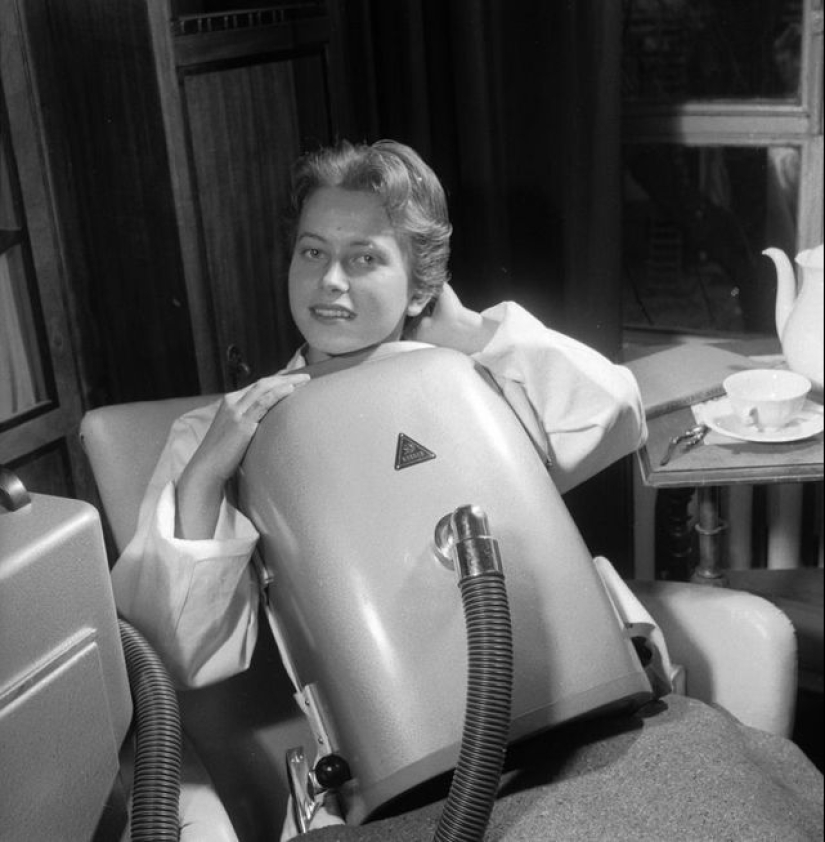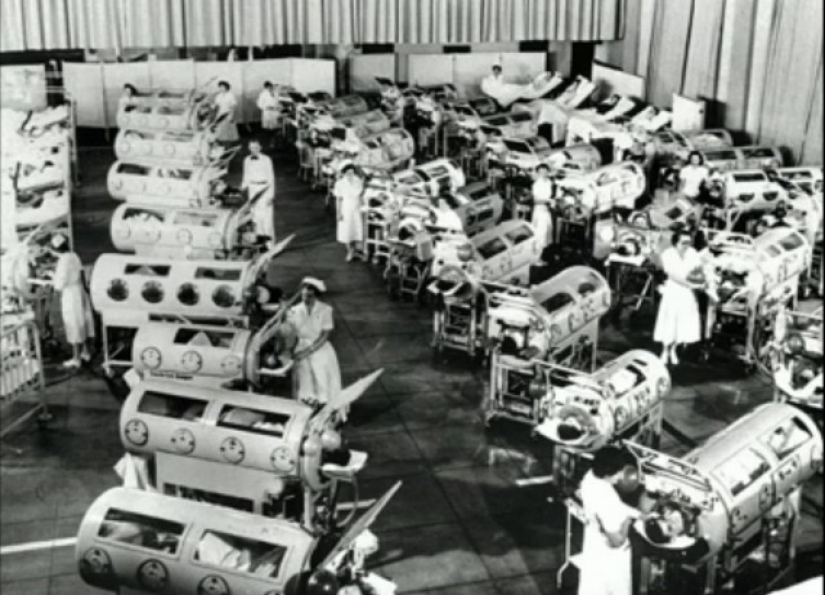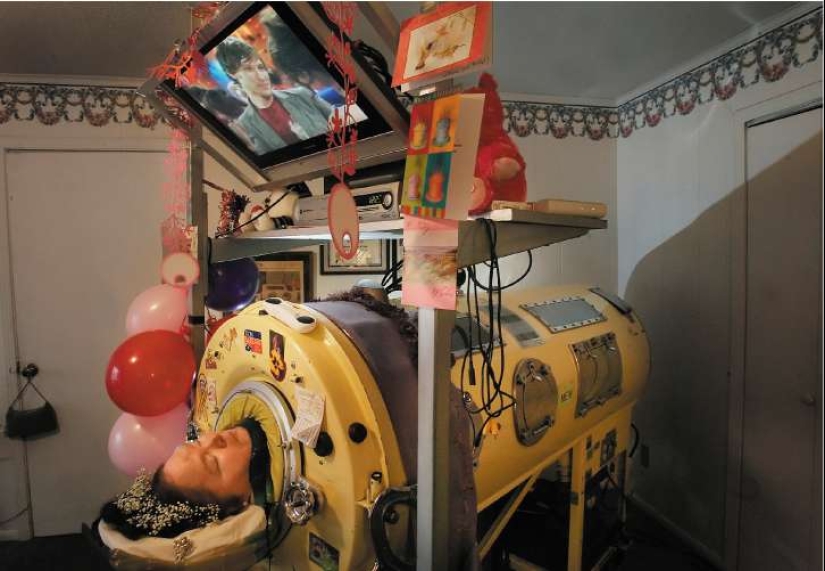Prisoners of the "Iron lung": how to rescue victims of polio, have forgotten how to breathe
Categories: Health and Medicine
PictolicIn the mid-20th century, the planet was gripped by an epidemic of polio virus, which was a surprise to all. The disease, described in the 19th century, was considered serious and even deadly, but were rare, so nobody could imagine that it will affect millions. Some of the victims of the infection, recovered, some have died, but there were those who remained alive by the ventilators. In these devices they had to spend the rest of my life.

Polio affected mainly children aged 6 months to 5 years. Paralytic form of the disease could hit the motor cells of the spinal cord and then the patient was permanently lost some important functions. Someone was paralyzed legs, someone completely paralyzed, but worst of all those who have the disease struck the spinal cord that are responsible for breathing. These patients died from suffocation if they didn't manage to put in a special apparatus.

Mechanical ventilation with the use of cameras, alternating pressure, was first used by German surgeon of the city of Breslau Ernst Ferdinand Sauerbruch (Ernst Ferdinand Sauerbruch). The doctor did surgery on lung patients fully placed in the chamber, except the head. When the pressure in the chamber is below atmospheric, into the patient's lungs received the air, when the pressure — he was pushed out outside.
So the device provides breath the man who because of his physical condition could not breathe. These devices became known in the English style "tanks", as with any tank or container. For the first time to save a patient with polio is equipment used on 12 October 1928 at Boston children's hospital. Then put inside the tank 8‑year-old girl dying from suffocation.

One of the first devices of the "Iron lungs"
It was a cumbersome, complex and far from perfect device for artificial ventilation of lungs, but he helped save the child's life. After this promising medical technique drew attention designers and tanks began to modernize, improve and adapt for use in clinics and at home.
Significant progress was made by the Swedish engineers, presented in 1952 the first serial vehicle C. G. Engstrom, dubbed the "Iron lungs" (Iron lung). It was a revolutionary device that is able to work non-stop for years. On the basis of this Swedish firstborn was created dozens of models of tanks for ventilation around the world.

Swedish camera C. G. Engstrom
Since polio was rampant not a year or two, people need machines were very many. The equipment manufactured at all plants, where it allowed the technical capabilities, including automotive. Produced not only a single model, but also devices for a few people.
In "Iron lungs" lived thousands of children who were forced to lie down and look at the world with installed around the mirror. All I could these accidents is to talk with each other and spit — it was the only available game.
For patients breathing with the aid of the "Iron lung", was given to the whole rooms in hospitals. Later, patients began to write back home, where they were inside the device, to serve who taught their relatives. I must say that the tanks were arranged simply and securely, so could work for decades.

Bench model with an "Iron lung"
The only beach of these patients was volatility. During a power outage, the pump was stopped create the pressure difference and the man in the machine was out of breath within minutes. Therefore, for the safety of additionally installed diesel generators to provide emergency power.
"Iron lungs" is a fairly large machine, with a length of 2 meters and a weight of kg. 340-400 So when it was invented portable models Krasnogo type, which could be worn on the torso, patients were jubilant. Unfortunately, this method of artificial respiration came not for everyone. Those few lucky people that were able to use portable versions that was still attached to power cord and due to the large weight of the machine moved only in wheelchairs.

Camera Krasnogo type
In the mid 50‑ies was invented polio vaccine that stopped the epidemic of the deadly disease. A big role in saving the inhabitants of the planet was played by Soviet scientists M. P. Chumakov, A. A. Smorodintsev working together with the Americans Jonas Salk and albert Sabina.
The result of the hard work associated with the vaccination of the population of many countries, in 1961, it was announced that the polio defeated. It is not so, as outbreaks flare up periodically in Nigeria, Pakistan and Afghanistan, but the threat of a global scale they are not.

Ward for patients using ventilators
Unfortunately, neither American nor Soviet vaccine could not regain the ability to breathe on their own thousands of patients in the apparatus of the "Iron lungs". People with a lesion of the respiratory center, today can expect to install a pacemaker, which provides respiratory rhythm. But those who spent years in tanks, the respiratory muscles completely atrophied and stimulation of the impossible.
Patients living in an "Iron lung" to have survived quite a bit, but they are still there. In 2018 it was aware of at least three such patients who are in the United States. The most famous inhabitant of the apparatus was an American Dianne Odell (Dianne Odell), which is held in the tank 60. During this time, the woman was able to finish several universities and to write a book.

Diane Odell in Iron lung
Diana's life was cut short in 2008 — has been a power outage, and the faulty emergency generator does not start. Woman gasped inside its life-saving capsule, while her family tried to turn on the power.
Keywords: USA | Health and medicine | Patients | Equipment | Epidemic | Breath | Lungs
Recent articles

This British aristocrat made history not for wars or politics, but for his unbridled passion for the stage, luxury, and ...

Who of us in childhood didn't want to find the treasure? Someone was looking for him in my grandmother's barn, someone — in ...
Related articles

American writer Margaret Mitchell wrote only one novel — "gone with the wind". But it provided the woman's place in the ...

Serial killers are male in history a few hundred and the army of the villains being added regularly. But among women «serial ...

We are sure that taking a nap in the afternoon for an hour or two is useful for everyone. Such a dream, if a person can afford it, ...

Lonely people wandering in unusual, surreal surroundings, all in black and white—this is the hallmark of Japanese street ...